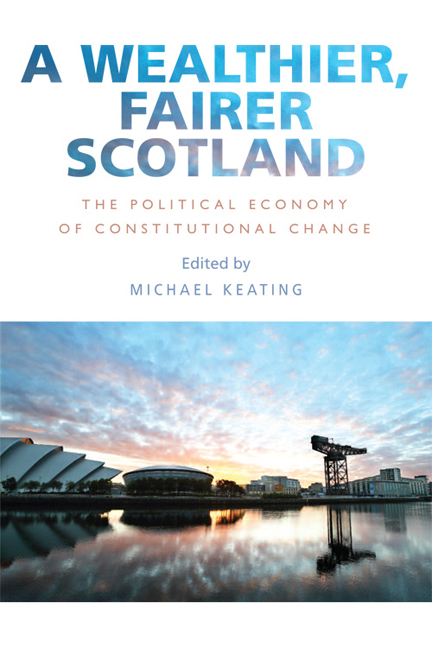84 results
22 - Nationalism
- from Part III - Politics
-
-
- Book:
- The Cambridge Constitutional History of the United Kingdom
- Published online:
- 12 August 2023
- Print publication:
- 17 August 2023, pp 540-560
-
- Chapter
- Export citation
An energetic signature for breaking inception in surface gravity waves
-
- Journal:
- Journal of Fluid Mechanics / Volume 959 / 25 March 2023
- Published online by Cambridge University Press:
- 23 March 2023, A33
-
- Article
- Export citation
HALO CleanSpace PAPR evaluation: Communication, respiratory protection, and usability
-
- Journal:
- Infection Control & Hospital Epidemiology / Volume 44 / Issue 2 / February 2023
- Published online by Cambridge University Press:
- 01 April 2022, pp. 295-301
- Print publication:
- February 2023
-
- Article
-
- You have access
- Open access
- HTML
- Export citation
9 - The Paradoxes of Democracy and the Rule of Law
- from Political Regulation, Governance, and Societal Transformations
-
-
- Book:
- Rethinking Society for the 21st Century
- Published online:
- 05 July 2018
- Print publication:
- 19 July 2018, pp 373-410
-
- Chapter
- Export citation
Constitutional Policy in Multilevel Government: The Art of Keeping the Balance. By Arthur Benz. Oxford: Oxford University Press, 2016. 288p. $90.00.
-
- Journal:
- Perspectives on Politics / Volume 15 / Issue 4 / December 2017
- Published online by Cambridge University Press:
- 20 November 2017, pp. 1173-1174
- Print publication:
- December 2017
-
- Article
- Export citation
nine - Interest groups and policy analysis in Belgium: examining the policy-analytical capacities and practices of prominent citizen and economic groups
-
-
- Book:
- Policy Analysis in Belgium
- Published by:
- Bristol University Press
- Published online:
- 05 April 2022
- Print publication:
- 15 March 2017, pp 193-212
-
- Chapter
- Export citation
List of Tables
-
- Book:
- A Wealthier, Fairer Scotland
- Published by:
- Edinburgh University Press
- Published online:
- 22 December 2017
- Print publication:
- 08 March 2017, pp v-v
-
- Chapter
- Export citation
7 - Getting to a Wealthier and Fairer Scotland
-
-
- Book:
- A Wealthier, Fairer Scotland
- Published by:
- Edinburgh University Press
- Published online:
- 22 December 2017
- Print publication:
- 08 March 2017, pp 129-145
-
- Chapter
- Export citation
Frontmatter
-
- Book:
- A Wealthier, Fairer Scotland
- Published by:
- Edinburgh University Press
- Published online:
- 22 December 2017
- Print publication:
- 08 March 2017, pp i-ii
-
- Chapter
- Export citation
Preface
-
-
- Book:
- A Wealthier, Fairer Scotland
- Published by:
- Edinburgh University Press
- Published online:
- 22 December 2017
- Print publication:
- 08 March 2017, pp viii-viii
-
- Chapter
- Export citation
Contents
-
- Book:
- A Wealthier, Fairer Scotland
- Published by:
- Edinburgh University Press
- Published online:
- 22 December 2017
- Print publication:
- 08 March 2017, pp iii-iii
-
- Chapter
- Export citation
1 - The Political Economy of Devolution
-
-
- Book:
- A Wealthier, Fairer Scotland
- Published by:
- Edinburgh University Press
- Published online:
- 22 December 2017
- Print publication:
- 08 March 2017, pp 1-25
-
- Chapter
- Export citation

A Wealthier, Fairer Scotland
- The Political Economy of Constitutional Change
-
- Published by:
- Edinburgh University Press
- Published online:
- 22 December 2017
- Print publication:
- 08 March 2017
List of Figures
-
- Book:
- A Wealthier, Fairer Scotland
- Published by:
- Edinburgh University Press
- Published online:
- 22 December 2017
- Print publication:
- 08 March 2017, pp iv-iv
-
- Chapter
- Export citation
References
-
- Book:
- A Wealthier, Fairer Scotland
- Published by:
- Edinburgh University Press
- Published online:
- 22 December 2017
- Print publication:
- 08 March 2017, pp 146-160
-
- Chapter
- Export citation
Index
-
- Book:
- A Wealthier, Fairer Scotland
- Published by:
- Edinburgh University Press
- Published online:
- 22 December 2017
- Print publication:
- 08 March 2017, pp 161-168
-
- Chapter
- Export citation
List of Contributors
-
- Book:
- A Wealthier, Fairer Scotland
- Published by:
- Edinburgh University Press
- Published online:
- 22 December 2017
- Print publication:
- 08 March 2017, pp vi-vii
-
- Chapter
- Export citation
A Survey of Infection Prevention and Control Practices among Hematopoietic Stem Cell Transplant Centers
-
- Journal:
- Infection Control & Hospital Epidemiology / Volume 37 / Issue 3 / March 2016
- Published online by Cambridge University Press:
- 07 December 2015, pp. 348-351
- Print publication:
- March 2016
-
- Article
- Export citation
Contributors
-
-
- Book:
- The Cambridge History of Gay and Lesbian Literature
- Published online:
- 18 December 2014
- Print publication:
- 17 November 2014, pp xi-xii
-
- Chapter
- Export citation
20 - The evolution of Australian macroeconomic strategy since World War 2
- from Part 5 - Building the modern economy
-
-
- Book:
- The Cambridge Economic History of Australia
- Published online:
- 05 September 2014
- Print publication:
- 08 October 2014, pp 438-462
-
- Chapter
- Export citation

